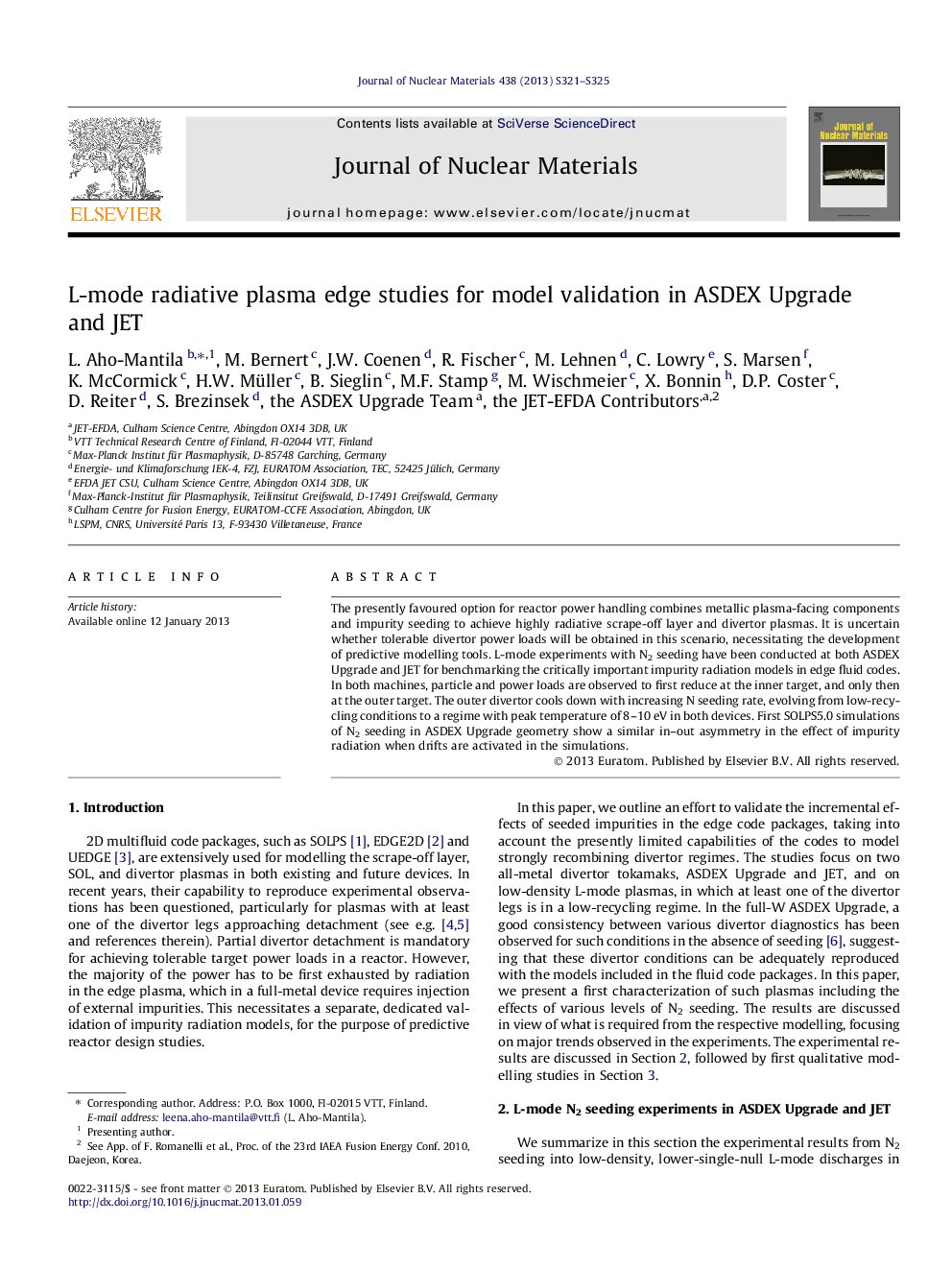| Article ID | Journal | Published Year | Pages | File Type |
|---|---|---|---|---|
| 10645001 | Journal of Nuclear Materials | 2013 | 5 Pages |
Abstract
The presently favoured option for reactor power handling combines metallic plasma-facing components and impurity seeding to achieve highly radiative scrape-off layer and divertor plasmas. It is uncertain whether tolerable divertor power loads will be obtained in this scenario, necessitating the development of predictive modelling tools. L-mode experiments with N2 seeding have been conducted at both ASDEX Upgrade and JET for benchmarking the critically important impurity radiation models in edge fluid codes. In both machines, particle and power loads are observed to first reduce at the inner target, and only then at the outer target. The outer divertor cools down with increasing N seeding rate, evolving from low-recycling conditions to a regime with peak temperature of 8-10Â eV in both devices. First SOLPS5.0 simulations of N2 seeding in ASDEX Upgrade geometry show a similar in-out asymmetry in the effect of impurity radiation when drifts are activated in the simulations.
Related Topics
Physical Sciences and Engineering
Energy
Nuclear Energy and Engineering
Authors
L. Aho-Mantila, M. Bernert, J.W. Coenen, R. Fischer, M. Lehnen, C. Lowry, S. Marsen, K. McCormick, H.W. Müller, B. Sieglin, M.F. Stamp, M. Wischmeier, X. Bonnin, D.P. Coster, D. Reiter, S. Brezinsek, the ASDEX Upgrade Team the ASDEX Upgrade Team,
